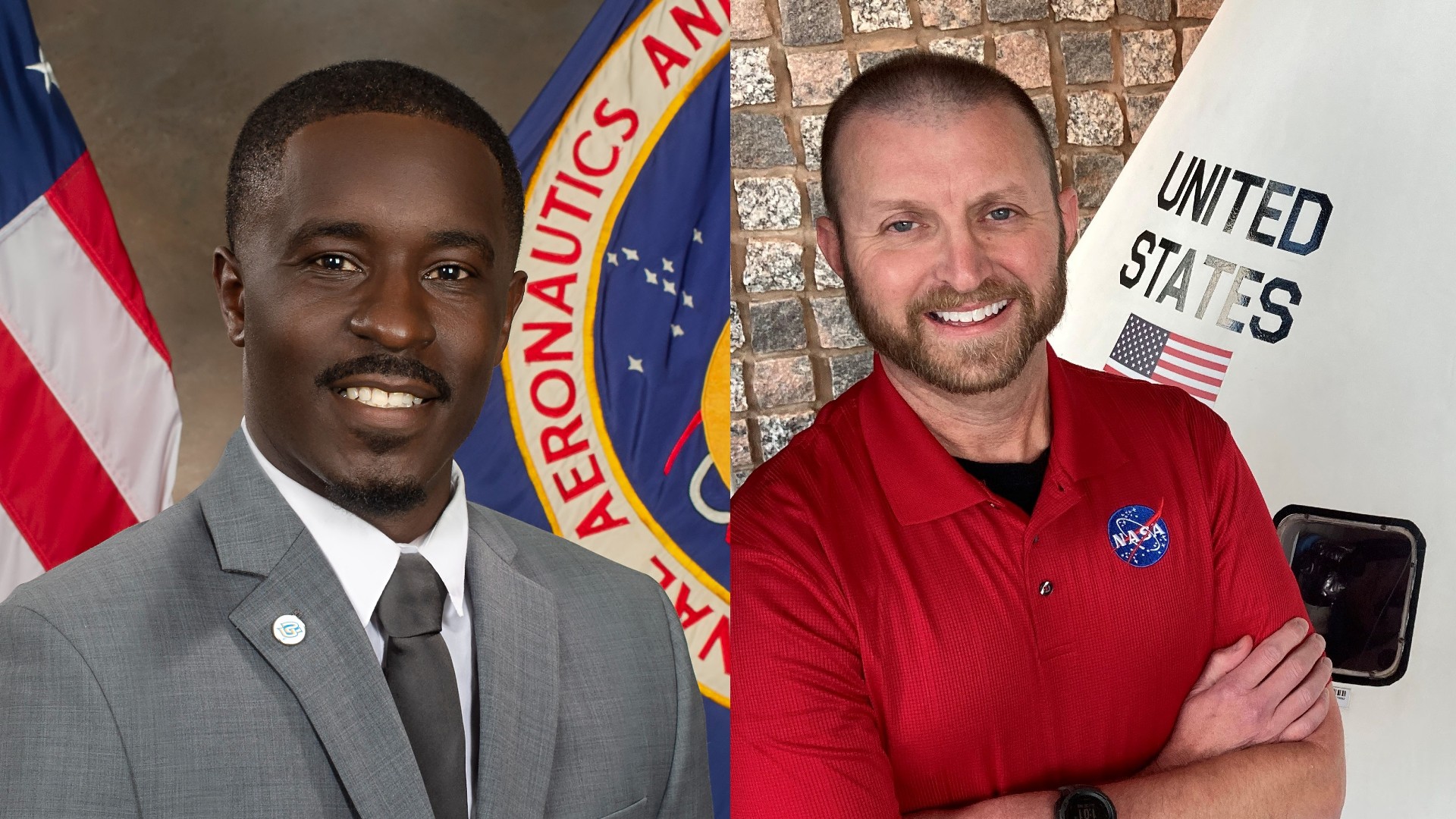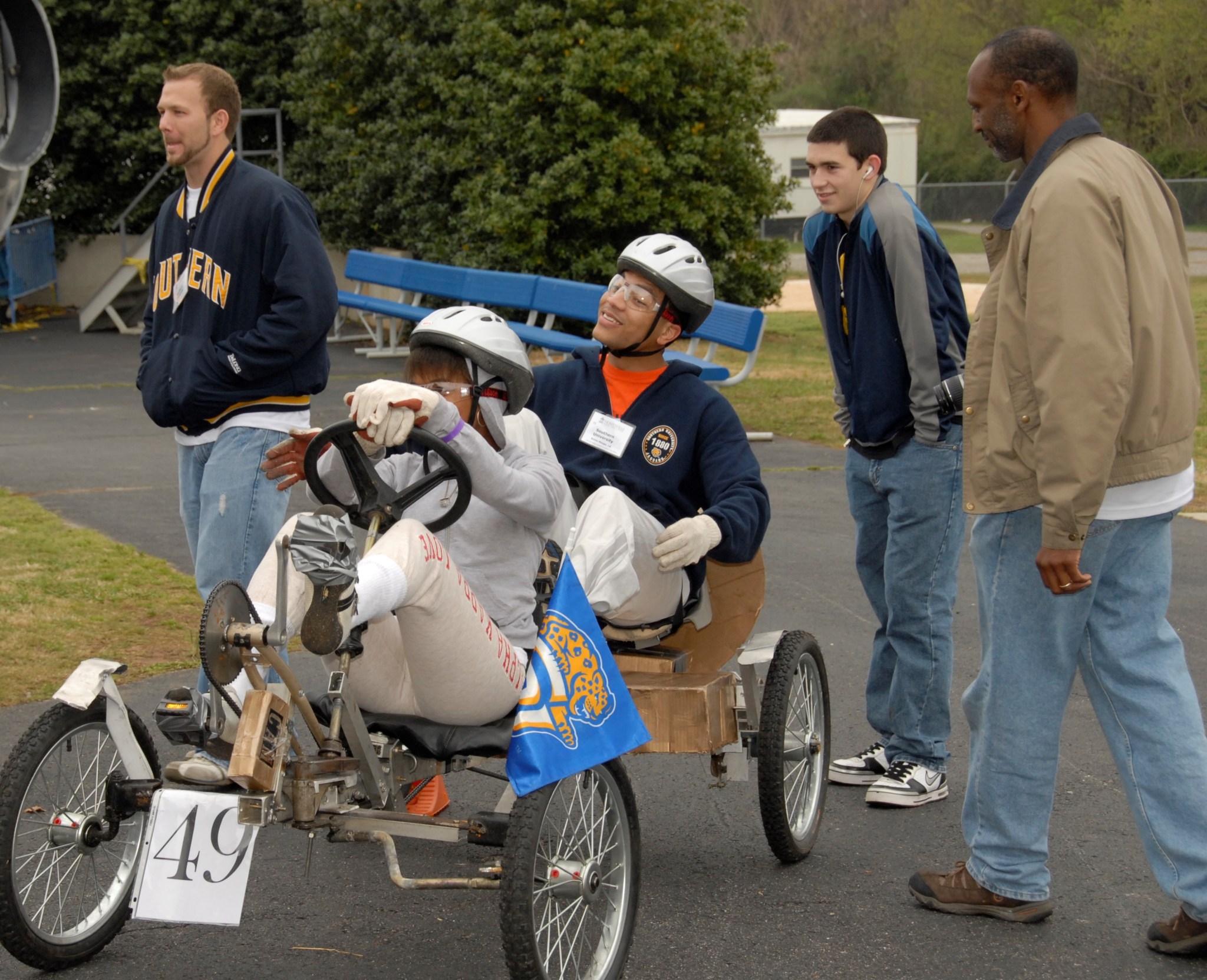By Wayne Smith
For many students, participating in NASA’s Human Exploration Rover Challenge (HERC) steers them toward a career in the aerospace industry, including working with NASA. That’s the case for Nick Benjamin and Mike Selby, two employees at NASA’s Marshall Space Flight Center in Huntsville, Alabama, who followed their rover path to a rewarding NASA career.
For nearly 30 years, HERC has provided student competitors with an opportunity to design, build and test a vehicle which could navigate the surface of the Moon, Mars, or other planetary bodies. The annual challenge and its sponsors encourage students across the United States and around the world to push the limits of innovation to imagine what it may take to explore deep space destinations.

Both Benjamin and Selby agree HERC broadened their knowledge of problem solving, collaboration, networking, and other skills needed in the 21st century workplace.
“I enjoyed how our team used NASA guidelines to build a vehicle which met such challenging specifications,” said Benjamin, a 14-year veteran with NASA and current Payload Operations Director. “HERC steers students toward the mindset of how NASA engineers and scientists approach design and development in order to solve challenging problems.”
In his current role, Benjamin manages and directs scientific operations aboard the International Space Station. He also co-chairs Marshall’s African American employee resource group, sharing NASA mission messaging through recruiting efforts to serve African American students from Historically Black Colleges and Universities.
While a senior at Southern University in Baton Rouge, Louisiana, Benjamin participated in HERC as part of his senior design project. Benjamin spoke with a NASA recruiter before competing, not knowing he would one day call North Alabama home.
“It was our school’s second year competing in HERC and rewarding to watch our rover traverse and complete the difficult obstacle course,” Benjamin said. “It was a great experience to cap off my college career and I immediately fell in love with NASA and the Huntsville area.”
As for Mike Selby, he competed in 1995 and 1996 while studying at the University of Alabama in Huntsville. Selby said participating in HERC galvanized his desire to pursue a career with NASA.
“The nine-month-long experience was enriching as we identified which students were suited for particular tasks, all while working within a strict budget and schedule,” Selby said. “HERC and other NASA challenges provide great opportunities for students to contribute toward NASA’s work in exploration and discovery.”
Prior to his current role as a mission manager in the Planetary Missions Office, Selby worked for nearly 25 years in the center’s engineering directorate. And just like Benjamin, Selby agrees he gained valuable skills designing, building, and competing with his HERC teammates.
Selby’s team won HERC in 1996 – one year after finishing second. Selby recalled strong thunderstorms delayed the event, which conveniently allowed his team time to make last-minute adjustments to their rover design. “Once finished, we quickly drove our rover to the event while other team members completed the on-site registration process,” Selby said. “Our team was convinced the weather delay helped us win HERC that year.”
In its third year as an Artemis Student Challenge, HERC draws inspiration from the Apollo and Artemis missions, emphasizing designing, constructing, and testing technologies, and traversing in unique environmental terrains. The competition reflects the goals of the Artemis program, which seeks to put the first woman and first person of color on the Moon.
The HERC challenge is managed by NASA’s Southeast Regional Office of STEM Engagement at Marshall. NASA’s Office of STEM Engagement uses challenges and competitions to further the agency’s goal of encouraging students to pursue degrees and careers in science, technology, engineering, and mathematics.
For more information about NASA’s Human Exploration Rover Challenge, visit:
https://www.nasa.gov/stem/roverchallenge/home/index.html
Christopher Blair
Marshall Space Flight Center, Huntsville, Ala.
256.544.0034
christopher.e.blair@nasa.gov


























